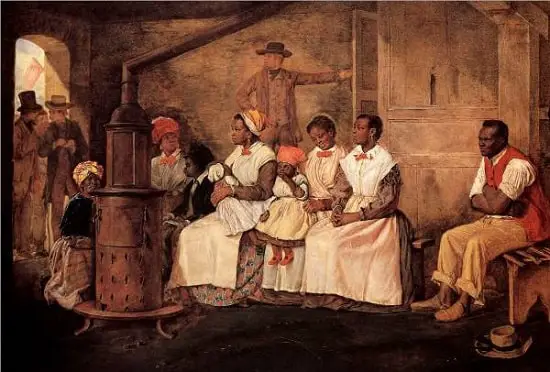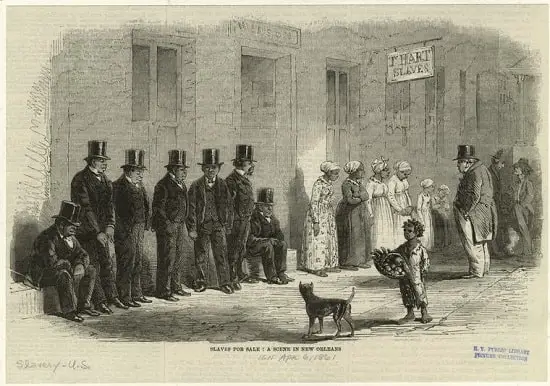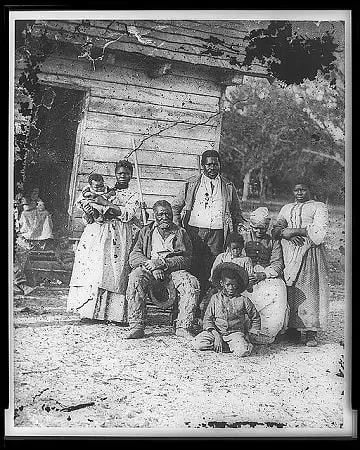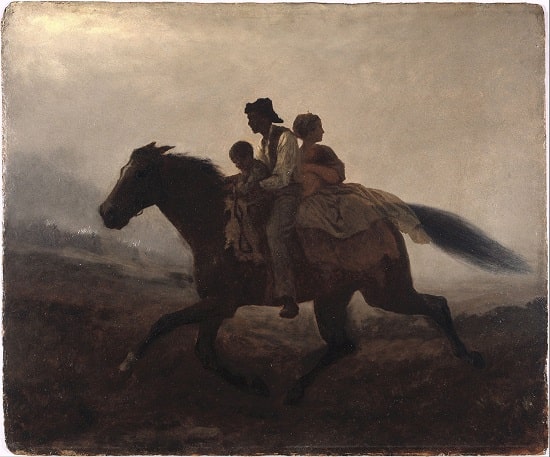Which Region of America Continued Slavery Afted the Industrial Revolution
Slavery was a fairly discussed topic among educated people in Britain, France, and American colonies in Britain. Although there were no actions taken regarding the abolition of slavery, the self-aware critics shined a light on the topic of trouble speaking about the rights of enslaved Africans.
The American revolution heavily impacted slavery. Slaves served on both sides of the War of Independence, which helped them gain freedom on certain levels.
Thousands of slaves ran away during the revolution. This led to acquiring their freedom from their masters when the British invaded Virginia. Also, slaves started to talk more about their natural rights.
This dedication laid the groundwork fight to abolish slavery and safeguard the rights of all Americans. The concept of Africans having rights was based on the natural rights philosophy.
What happened to slavery after the American Revolution?
The institution of slavery was greatly affected by the American Revolution. Thousands of enslaved people were released due to their service on both sides of the American Revolutionary War.
Many enslaved people were emancipated due to the revolution, while thousands more were freed by fleeing.
After the Revolutionary War, why did slavery continue to exist?
Slavery persisted in the South because huge farms needed slaves to undertake most of the hard work for the plantation owner to prosper.
Why did slavery exist in the newly formed United States?
It might still be profitable since laws were sluggish to modify and enforce.
Concept of Slavery in America and Britain

The concept of natural rights was discussed by a minority, usually on religious grounds. However, with the theory's spread, there was a slow growth of moral resistance towards slavery.
Like Benjamin Franklin used to already talk about slavery, many well-read Americans became increasingly unhappy with slavery. Edmund Burke believed the revolution to be a rational defense of the rights to which people were entitled.
Following the American conflict, there was active development of the anti-slavery movement in America and Britain.
The people in England, during the War of Independence, were the vocal defenders of American rights and the American cause as they were uncomfortable with slavery.
Similarly, they were also advancements in America entirely before the start of the conflict between Britain and the colonies in 1775. Still, the war compelled Americans to reconsider the nature of government authority and accept rights as the proper basis of governance, turning out to be a revolutionary period in world history.
It transformed what had been a regional fight over legal rights under English law up to that point into a revolution in favor of a new philosophy of rights and, as a result, a completely new foundation for governance.
The Pennsylvania Statute was adopted in 1780 for the Abolition of Slavery. The foundation of governance was based on natural rights, and Pennsylvania was the first place to accept it.
Slavery was abolished by legislation in the states north of Pennsylvania due to the revolutionary appeal for universal natural rights during the Revolutionary generation.
The United States gained freedom after the American Revolution, where up to nine- thousand African Americans served in the military services. But their periods of duty were often far more extended than white men's.
The black army made up between fifteen and twenty percent of the forces' adequate strength at any given period.
They became increasingly noticeable as the war progressed and white recruitment declined. None of these guys, rightly classified as our nation's founders, fought to keep slavery alive.
Any slave owners concerned about early anti-slavery ideology should have rejected the American Revolution, and its foundation is in natural rights philosophy, which seems rational.
During the American revolution

Thousands of slaves ran away during the peak of the war. Some were freed by joining the loyalist refugee exodus. Former slaves who lived out their days in Canada discovered a haven in a part of the British Empire that was entirely unsuitable for slavery.
Slavery throughout the British Empire was just as dreadful as in the former colonies. Their slaves contributed to Britain's prosperity. They successfully fought abolition for decades, just as slave owners did in the United States.
Although in 1833, slavery was removed from the British Empire, London still approved the labor system. The slaves were bound to land, and emigration was prohibited. This action replaces slavery with a life of hard labor.
These restrictions narrowed fundamental opportunity rights for former slaves and their children for more than a century.
Many revolutionary war leaders, slave owners like George Washington, or anti-slavery opponents like John Jay or Alexander Hamilton were against the abolition of slavery by federal law. They feared the act jeopardizing the states' union.
Benjamin Franklin took that risk by signing a petition. It requested Congress to abolish slavery in the United States just two months before his death.
In the United States, anti-slavery could not overcome the tobacco and rice planters' reliance on slave labor. This resulted in the abolition of slavery in America during the revolution. Little was done to abolish slavery nationally.
After Revolution's impact on slavery

Although the revolution did not result in the abolition of slavery. It did start a process of immediate and gradual liberation in northern states.
In Philadelphia, Pennsylvania, Quakers created the world's first anti-slavery group in 1775, the year the Revolutionary War began. Quakers: The Society of Friends is a pacifist Christian sect that believes everyone has an inner
light and God live inside them.
As a result, even though some Quakers still owned slaves before the revolution, most Quakers have embraced racial and gender equality, historically problematic concepts. They
viewed slavery to be somewhat unethical and undermining. They believed in the
natural rights of all people and thrived on providing the same.
After the Quakers, more people joined the movement. There were more than thirteen anti-slavery societies in America by 1788.
Some American slaveholders were freed due to the fight for liberty, and most northern states quickly gradually implemented emancipation statutes.
The Assembly freed any slaves who had fought for the Continental Army during the war the following year. The free black population of Virginia overgrew due to these new rules. There were 2,800 free black persons in Virginia in 1780, and by 1810, there were 30,000.
Slaveholders were barred from bringing slaves into the Northwest Territory under the Northwest Ordinance, but slaveholders who already lived there were allowed to keep their human property.
As their numbers grew, free blacks formed social organizations, including churches, schools, and benevolent societies.
Slavery and the Constitution

The United States' political leaders met in Philadelphia in 1787 to discuss the construction of a new federal constitution meant to replace the Articles of Confederation.
The Article of Confederation aimed to create a new nation different from the monarchy. They represented ideas of the revolutionary age, despising consolidation of power.
At the Constitutional Convention in 1787, New England and the Deep South reached a compromise.
In exchange for South Carolina and Georgia delegates supporting a constitutional clause that made it easier for Congress to approve commercial laws, they agreed to safeguard the foreign slave trade for twenty years.
This caused the Atlantic slave trade to flourish. Later in 1808, it was abolished as Britain was also attempting to abolish the slave trade, and the United States did not want to give up any moral ground to its opponent. Also, The White Americans were horrified by tens of thousands of armed black revolutionaries.
According to President Thomas Jefferson and other White Americans, the United States could be made a state with the abolition of slavery and a country of white men only if the domestic slave population are dispersed and the foreign slave trade is ended.
Conclusion
The American Revolution did not end racism and oppression. It posed a challenge to a world that was fundamentally unfree.
The revolution created recognition for natural rights and resulted in the abolition of slavery and new challenges to all forms of oppression and injustice.
However, far too many people continue to be denied their inherent rights. The revolution brought about change for some black individuals, but not nearly enough to achieve full equality.
Slavery in New England was almost immediately abolished, credited to African Americans' brave military service and the revolutionary spirit.
Despite this, free blacks in the North and South experienced continuous discrimination in almost every aspect of life, particularly jobs, housing, and education. Slavery was hoped to be abolished in the American South by many of the founders.
Source: https://historyten.com/american-history/slavery-after-american-revolution/
0 Response to "Which Region of America Continued Slavery Afted the Industrial Revolution"
Post a Comment